The decoration of the suburban area will be a barberry hedge. Breeders have created many varieties that amaze with their beauty and richness of color. The varieties of barberry Thunberg look gorgeous in landscape design photos. The hedge can be of different heights, it all depends on the variety. Gardeners appreciate shrubs for their pliability to pruning, they create beautiful forms from plants.
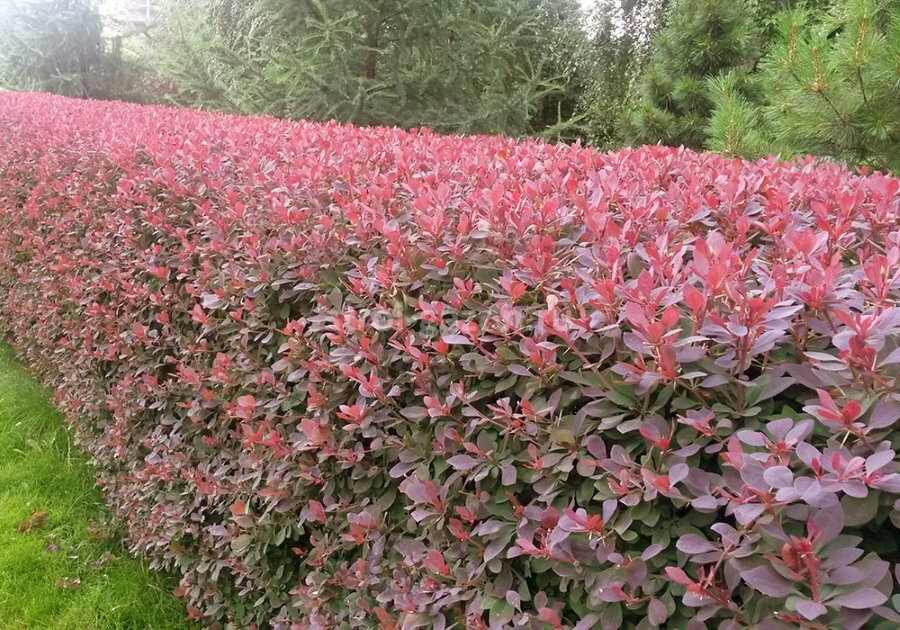
Barberry hedges with red and purple leaves look beautiful
What types of barberry are used in landscape design?
Content
- What types of barberry are used in landscape design?
- Barberry Ottawa
- Barberry Amur
- Barberry Thunberg Coronita
- How to propagate barberry for a hedge
- Features of planting barberry
- Rules for decorative pruning of shrubs - photos of beautiful examples
- Video: Planting barberry seeds in a hedge
- Photo of a barberry in a garden landscape
A hedge in the landscape performs not only a decorative, but also a protective function. Thorny shoots form a dense crown, through which animals cannot get through, it is difficult for people to overcome the obstacle. Plantations (in the case of barberry, mostly colored) reduce the noise level, protect the area from street dust and car exhaust.
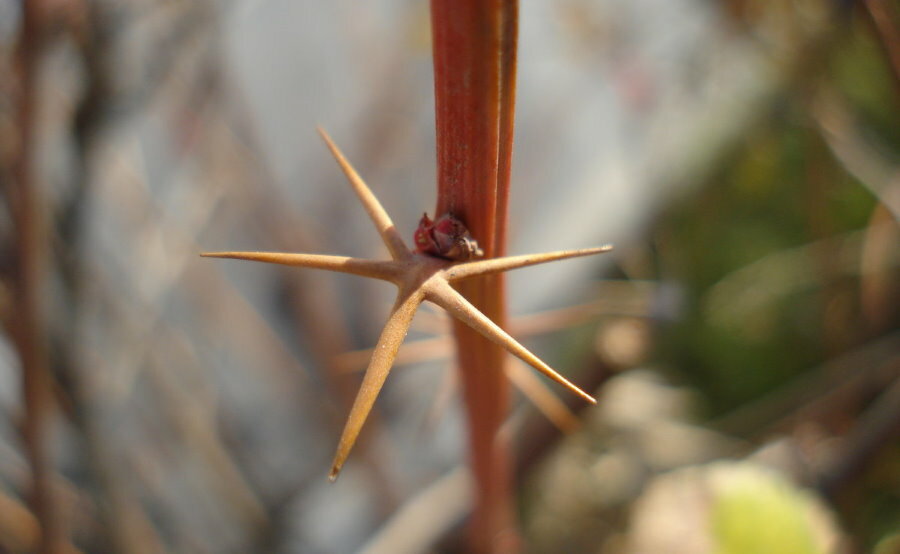
Protecting the site from intruders is one of the functions of a hedge. The barberry copes with this “perfectly” thanks to the thorns on its shoots.
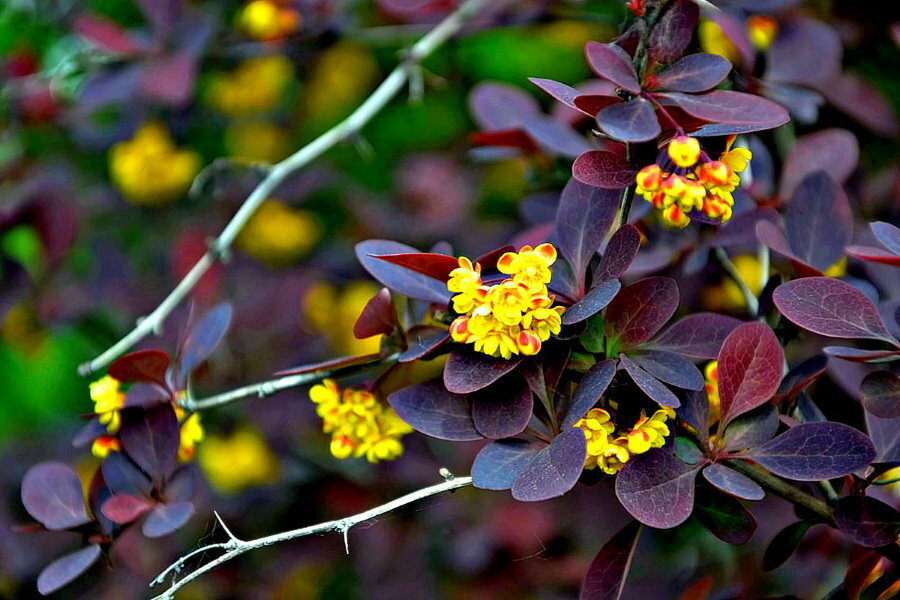
In the spring, the barberry wall will be decorated with bright yellow flowers
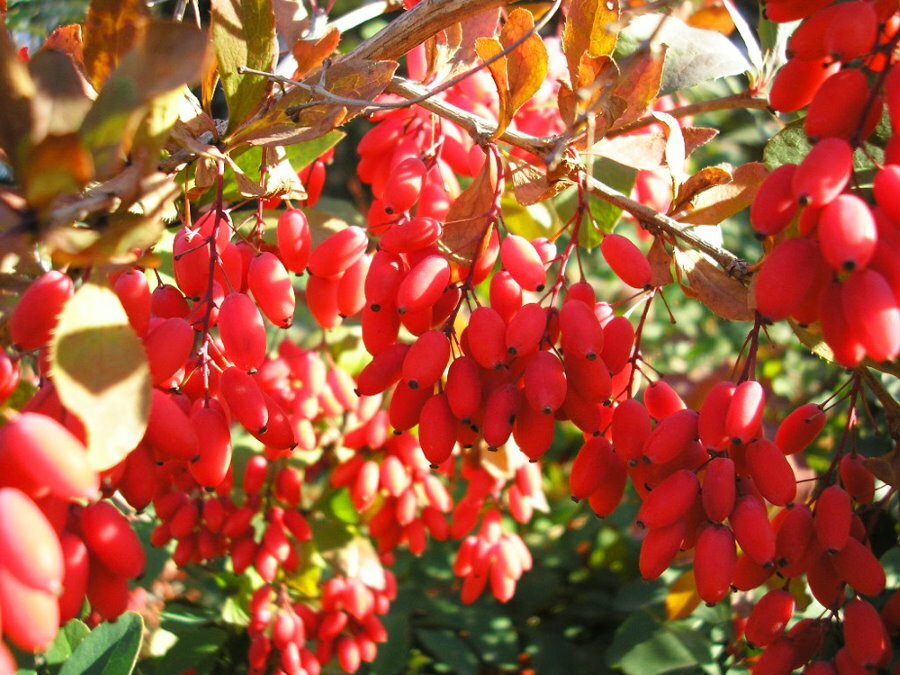
In autumn, the red fruits will highlight the barberry against the background of other plants.
In temperate latitudes, more than 20 varieties are grown that are resistant to sudden temperature changes and winter frosts. However, only a few of them are in demand specifically for the creation of living fences.
It is worth choosing a variety based on what kind of fence the owner wants to see later on his site. The height of the hedge and the rate at which it grows directly depends on the variety. Climatic conditions must also be taken into account, although most varieties tolerate even severe frosts well.
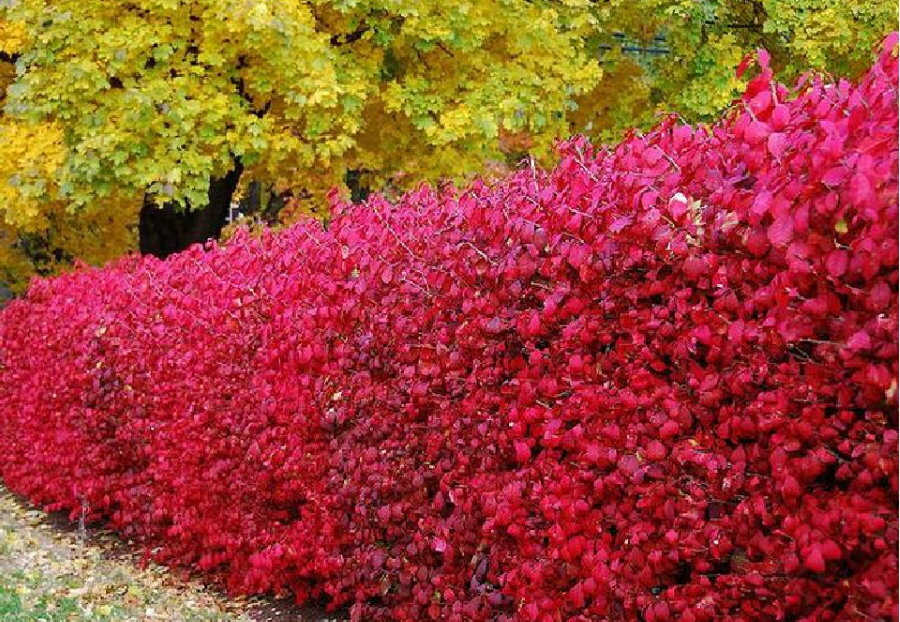
The barberry hedge is decorative throughout the warm season
Decorative variegated fences are formed, combining several varieties of varieties of the Thunberg selection, these are:
- red-leaved Golden ring with yellow outlining of the leaf plates;
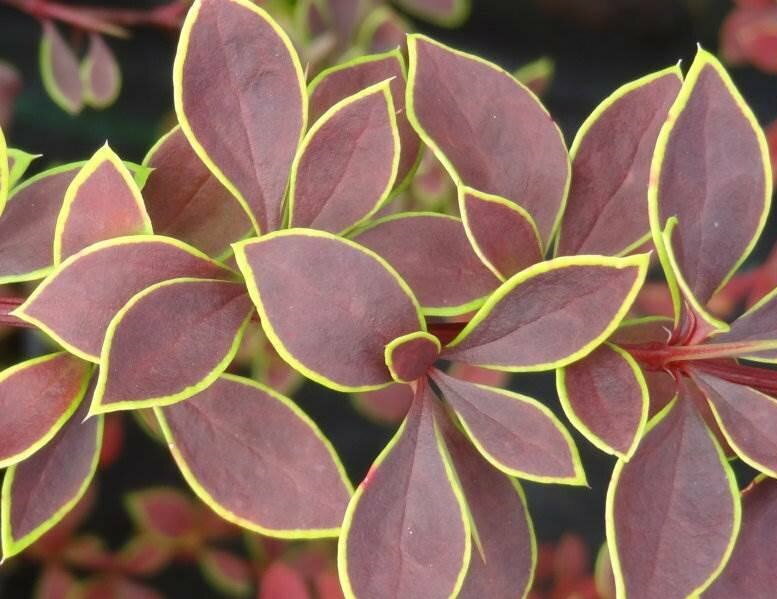
Barberry Golden Ring grows up to 1.5-2 meters
- burgundy Harlequin, which takes on a golden hue in the fall;
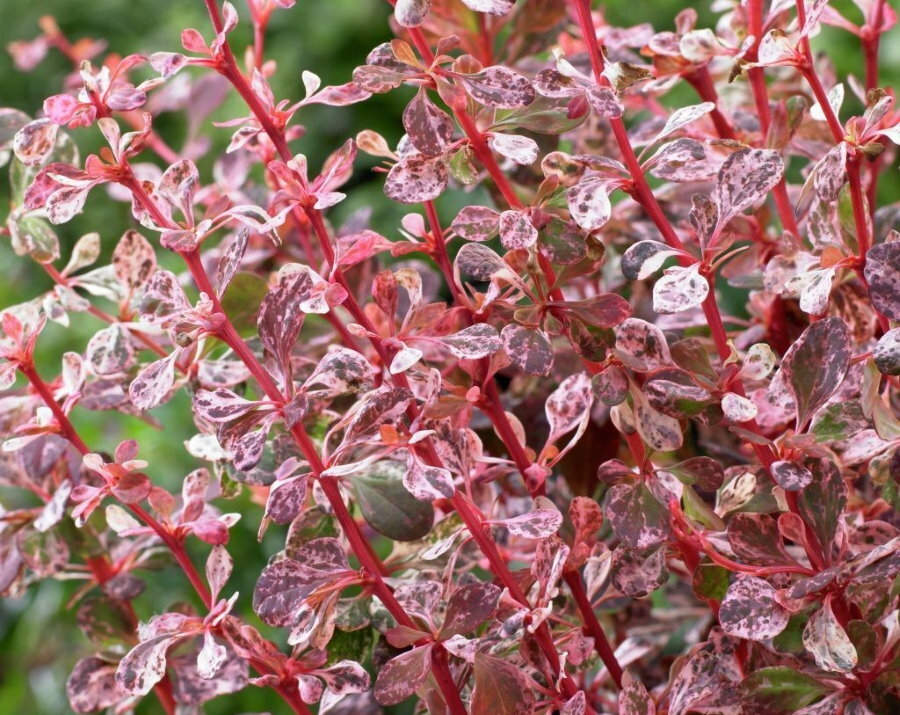
The color of the foliage of the harlequin barberry changes under the influence of weather conditions
- orange rocket orange, which acquires a carmine hue with the onset of cold nights;
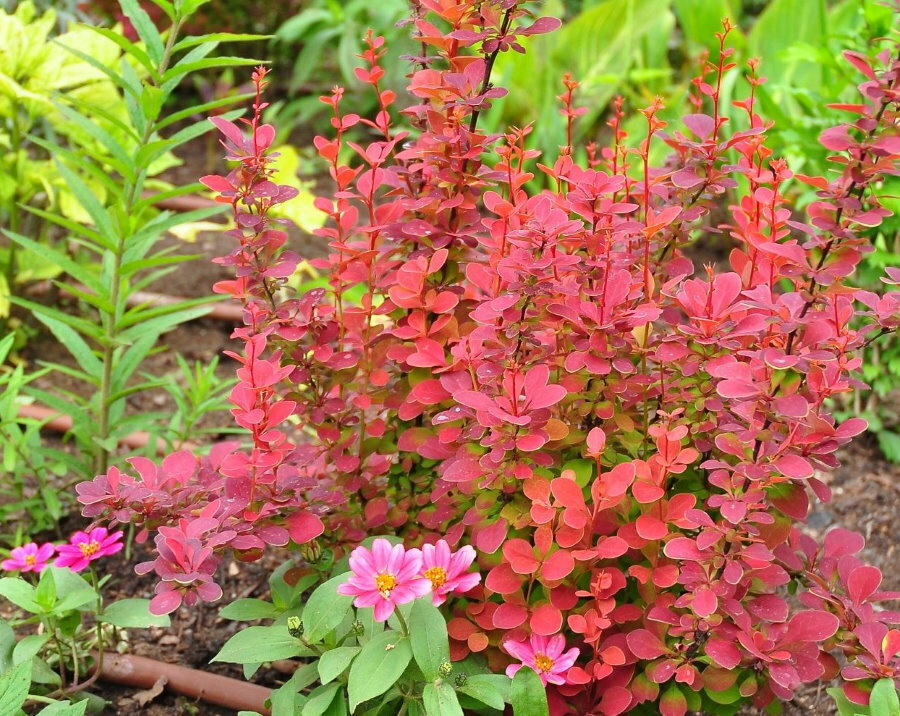
Barberry Orange rocket attracts with its two-color
- Greni Carpet green to brick red.
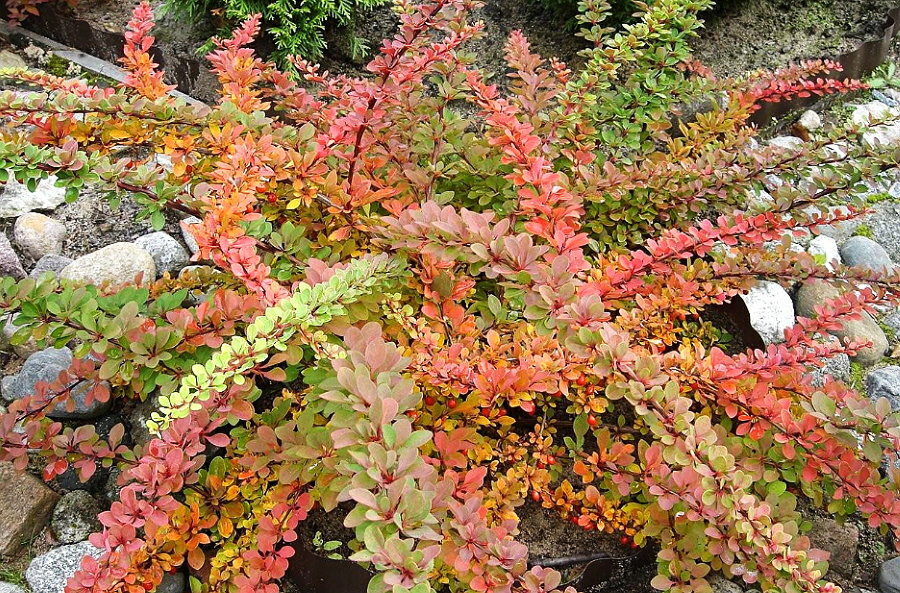
Greni Carpet is suitable for creating curbs up to 1 meter high
The popular varieties used for living fences deserve a detailed description.
Barberry Ottawa
Among the Canadian cold-tolerant hedge barberry varieties, this variety stands out for its colorful purple color. The hybrid was obtained by crossing the common and short-thorned Thunberg barberries.
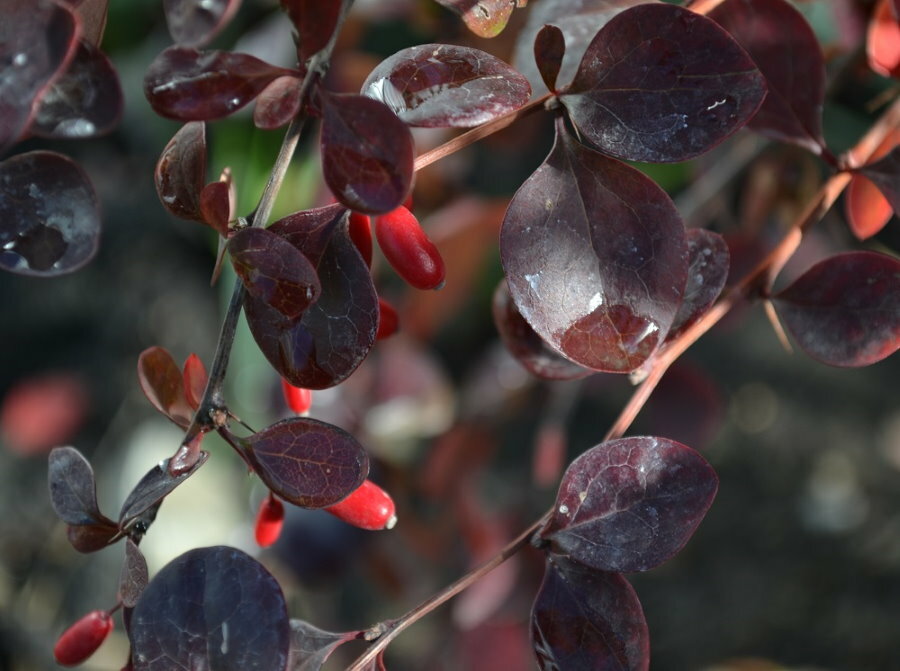
The variety is very popular among gardeners due to the amazing color of the leaves.
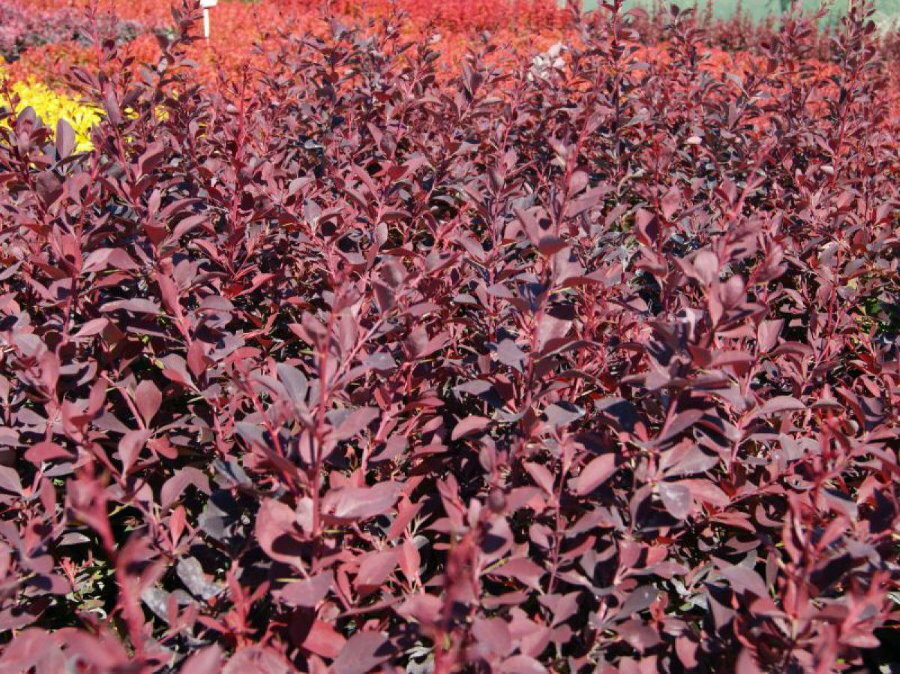
The main part of the bush is spreading branches that can grow both up and hanging down.
The height of the bush reaches 3 meters. The spines of the plant are rather soft, few in number. By autumn, the purple color of the leaf plates changes, shades of red and yellow appear. Bright red elliptical berries add color, stay on the branches for a long time. The bush is extraordinarily beautiful at any time of the year. During flowering, it is covered with a cobweb of small white-yellow flowers.
Edible berries are used for medicinal and culinary purposes.
Barberry Amur
A 2-meter high shrub was bred by breeders of the Khabarovsk Territory on the basis of wild plants growing in the Far East. The variety is popular in many regions, thanks to its long sharp thorns, it is often used in plantings around the perimeter of the site.
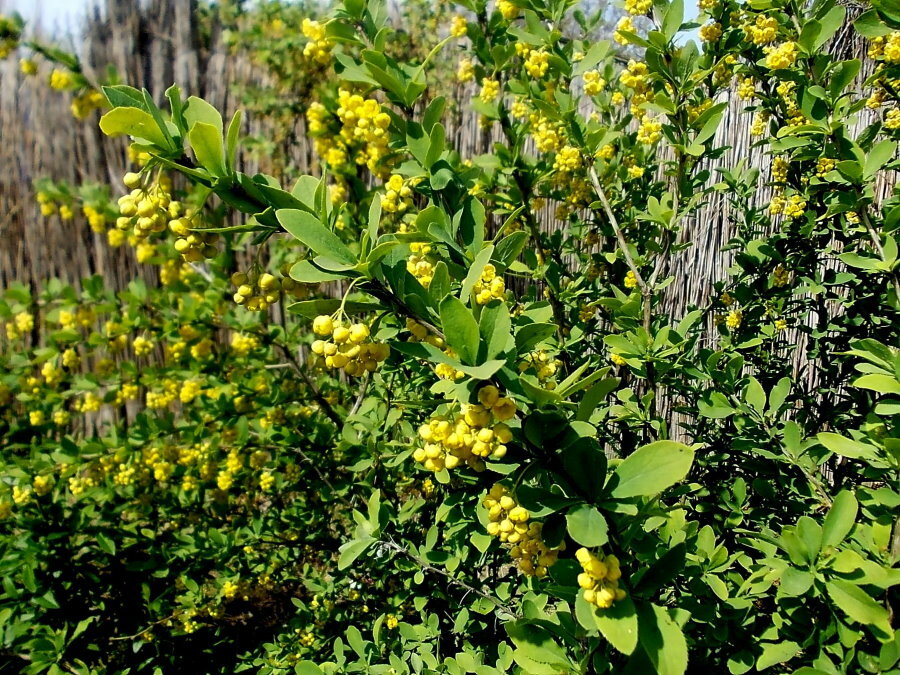
Barberry Amur during the flowering period (May-June)
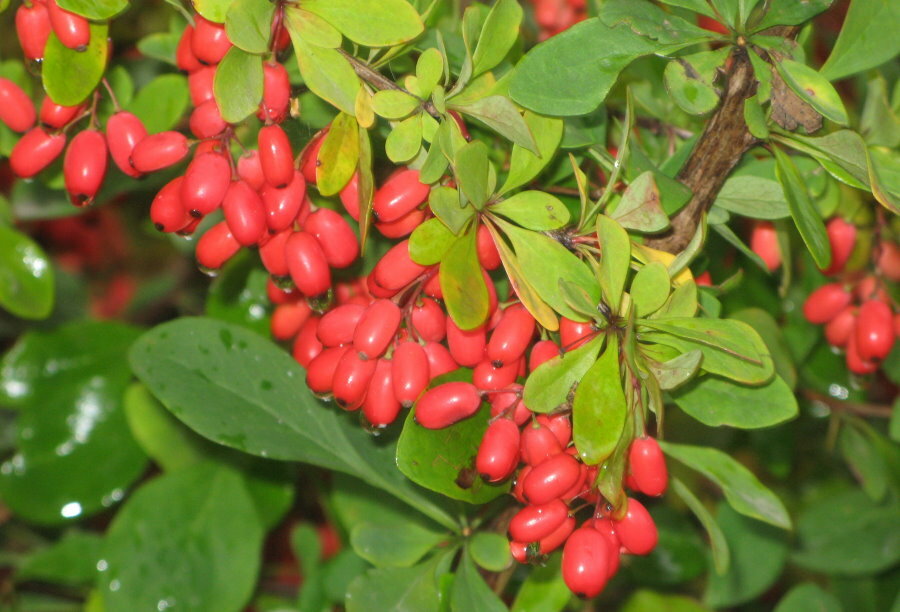
Barberry Amur during fruiting (August-October)
The flowers of the plant are yellow, numerous. With the onset of cold matinees, the leaves acquire red shades of varying saturation. In a well-lit area, the leaf plates become bright burgundy.
You should not feast on unripe berries, they contain poison that causes stomach poisoning, diarrhea. The fruits become edible only in mid-September.
Barberry Thunberg Coronita
The medium-sized barberry Koronita in the garden design as in the photo is used to create a stepped two-row hedge. The shrub forms a uniform crown that changes color with the onset of cold weather. Green leaves turn yellow, pink, red.
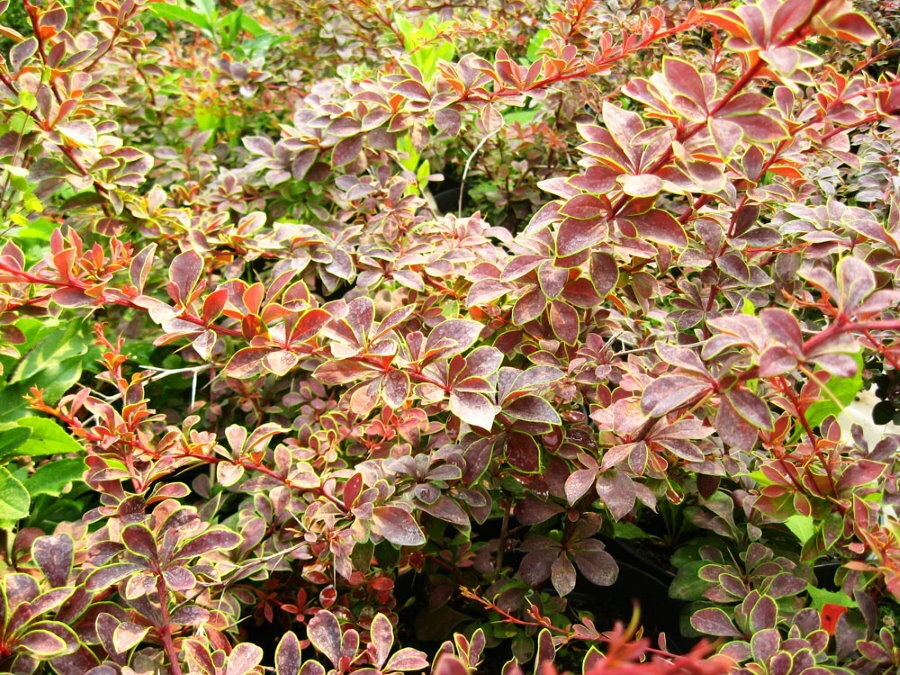
At the beginning of autumn, the leaves gradually change color, turning into darker and more saturated colors.
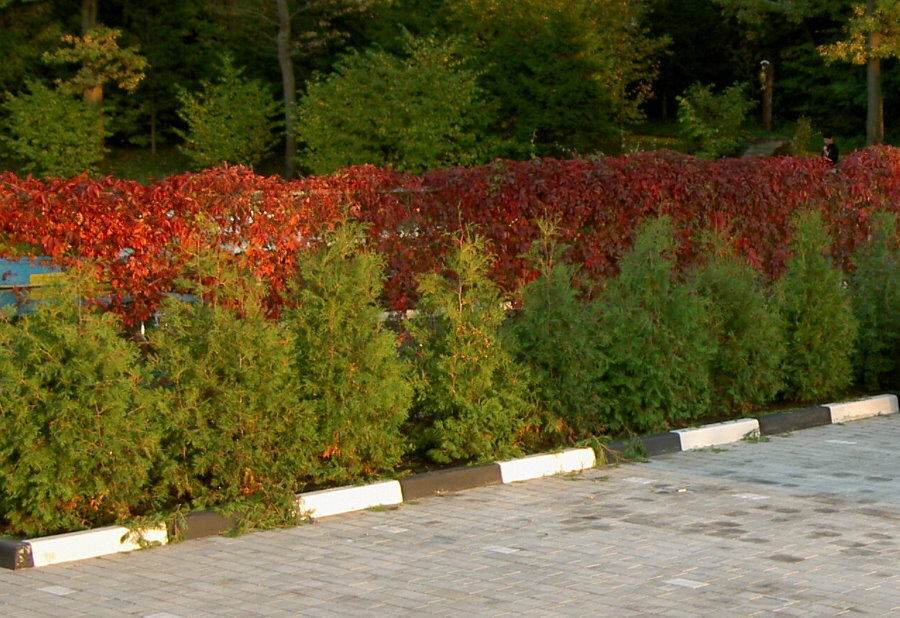
By mid-autumn, the hedge becomes almost red and stands out favorably against the background of evergreens
In spring, the plant attracts pollinators, blooms at the end of May. The shoots are covered with yellow flowers. The variety is frost-resistant, not afraid of temperature extremes, unpretentious, grows on any soil.
The only drawback of the variety is the low threshold for resistance to powdery mildew. To keep the living fence beautiful, the hedge is treated with Bordeaux liquid along the green cone.
How to propagate barberry for a hedge
The shrub propagates by seeds and vegetatively: by layering, cuttings. The easiest way to propagate barberry for a hedge is by dividing the bush. The root system grows rapidly, within 5–7 years the barberry forms impenetrable thickets. To thin them out, you have to throw away some of the plants.
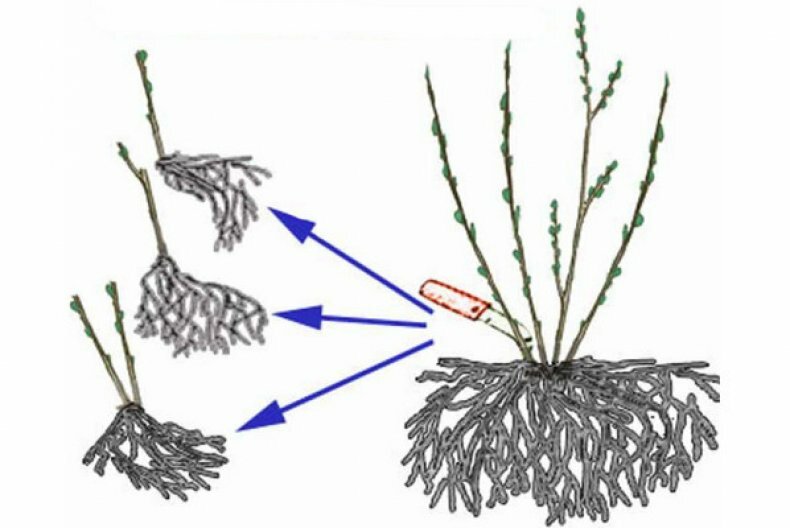
From each barberry bush, you can get at least three new seedlings
When varietal varieties have just been acquired in the nursery, division is done by cuttings or layering. Young shoots are obtained in the same way as from other berry bushes. The lower stem is bent down, sprinkled with earth, moistened. When a shoot appears at the pinning site, the young plant is separated from the mother bush. Transferred to a permanent place.
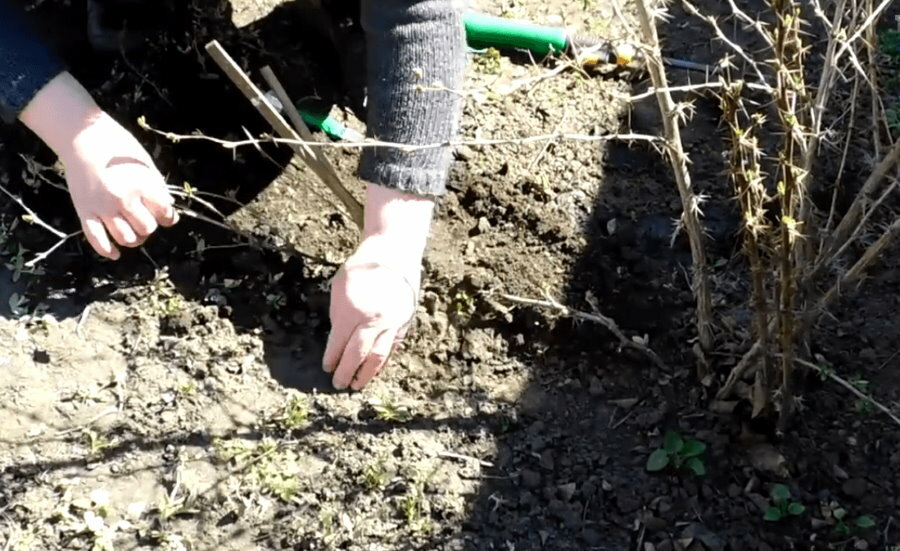
Reproduction by layering is one of the easiest ways to obtain planting material
If the shoot is covered with earth along its length, leaving only the tip on the surface, several layers will form at once.
For cuttings, even two-year shoots are chosen. Cut the twig into 15 cm pieces. Root the cutting in water with a few drops of a growth stimulant or drop it into a moist earthy substrate containing water-retaining components. When 4–5 leaves appear, the seedling is ready to be transplanted into the trench.
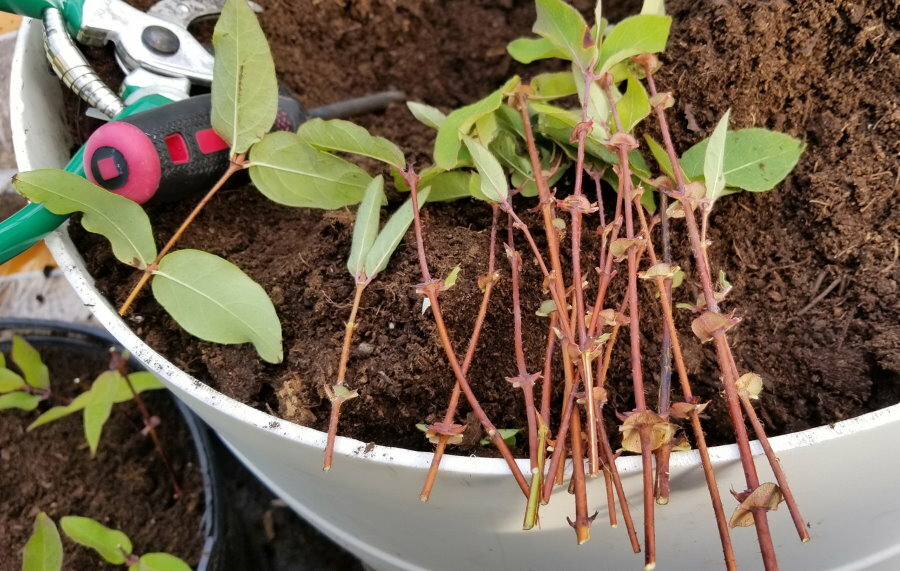
Leaves on the cuttings are left only on top, the lower bud is buried in the ground
The seed method will take more time. Plants purchased from the nursery usually bear fruit in the year of purchase or the next. The seeds are small berry seeds and do not need to be separated from the red pulp. You can close up ripe berries in the groove in late autumn, or sprinkle the fruits with sand, put them in the basement or cellar until spring. Germination of seeds at home is practiced, then by the spring small bushes will form, which can be transplanted to the garden plot.
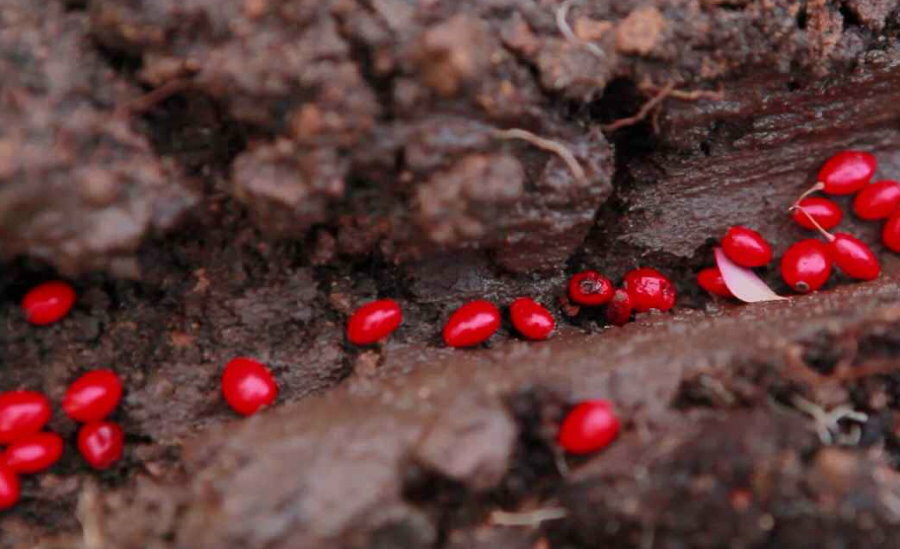
Seeds are planted in shallow grooves made in damp ground
Features of planting barberry
The shrub does not like too shaded areas, especially picturesque in sunny places. Drainage should be done prior to planting hedges on flooded lands with high groundwater levels. Bushes should be planted to a depth of 25 cm. The scheme of planting barberry hedges depends on the number of rows, varietal characteristics. Tall varieties form spherical crowns.
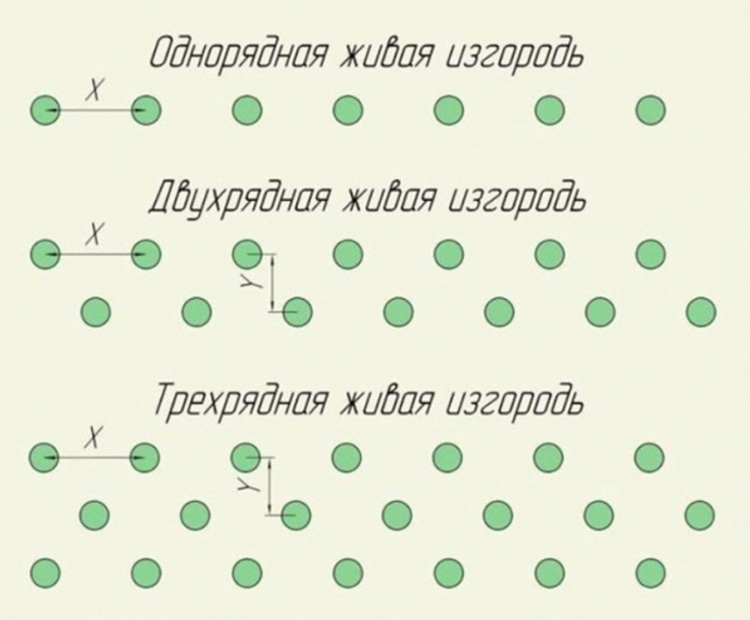
Barberry hedge planting schemes
With a single-row trench planting, a distance between plants of at least 50 cm is maintained. When stepped hedges are formed, stunted crops are planted in the outer row with greater frequency. The distance between the rows is from 80 cm to one meter.
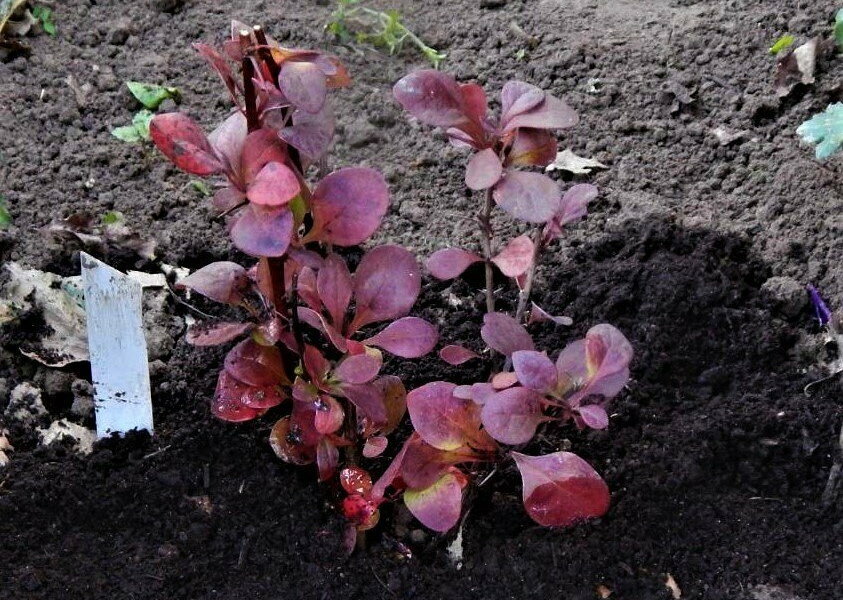
Immediately after planting, the bushes are abundantly watered and mulched.
You can plant plants twice a year:
- in early spring, as soon as the snow melts, the earth becomes pliable;
- in the middle of autumn, so that the bush has time to take root before the onset of cold weather.
To make the landings even, pegs are driven in at the edges, twine is pulled between them.
Rules for decorative pruning of shrubs - photos of beautiful examples
Barberry in landscape design is grown naturally or undergoes formative pruning.
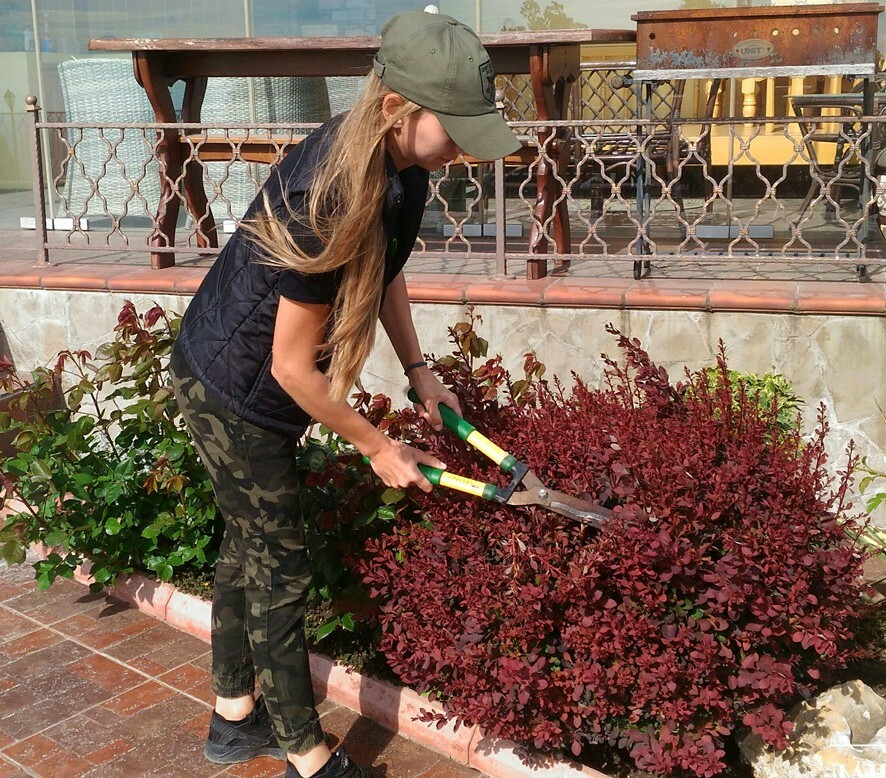
Barberry Thunberg tolerates a haircut almost painlessly and keeps its shape well
Discharged shrubs are formed in the form of balls, columns, geometric shapes. Rectangles of regular shape or with a rounded top are formed from dense.
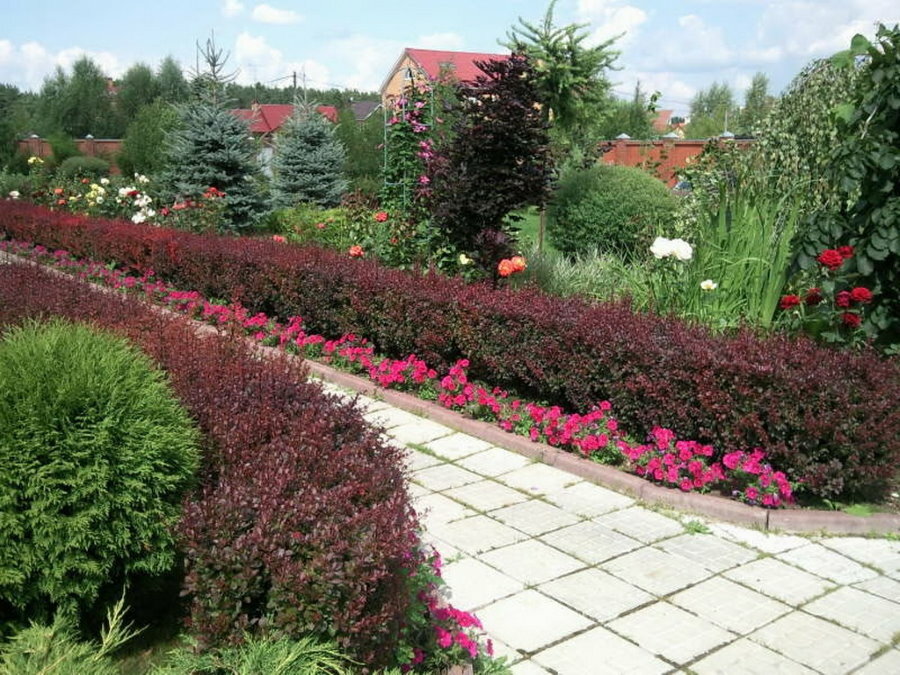
Live border of Thunberg barberry with red-purple leaves
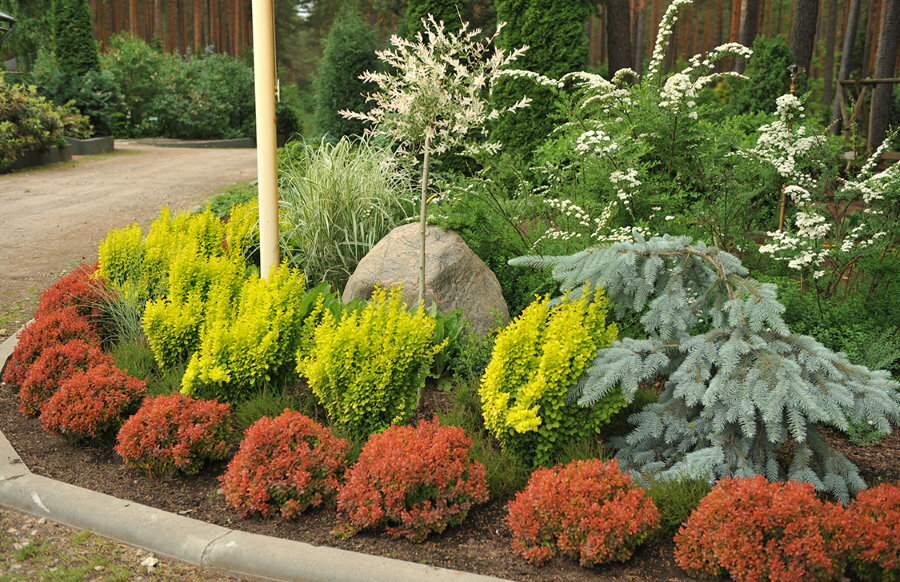
Dwarf barberry along the garden path
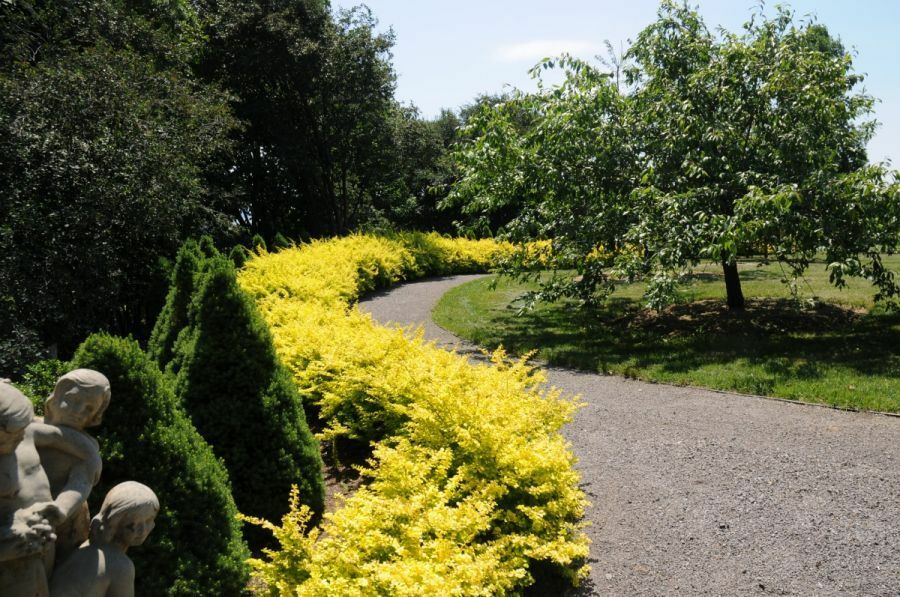
Beautiful barberry hedge with yellow leaves
Stepped hedges look especially beautiful. With proper pruning, no more than 1/3 of the shoot length is removed, up to 20% of the volume. The main part of the branches is removed in the spring, then the shape of the barberries is corrected during the season.
Video: Planting barberry seeds in a hedge
Photo of a barberry in a garden landscape

